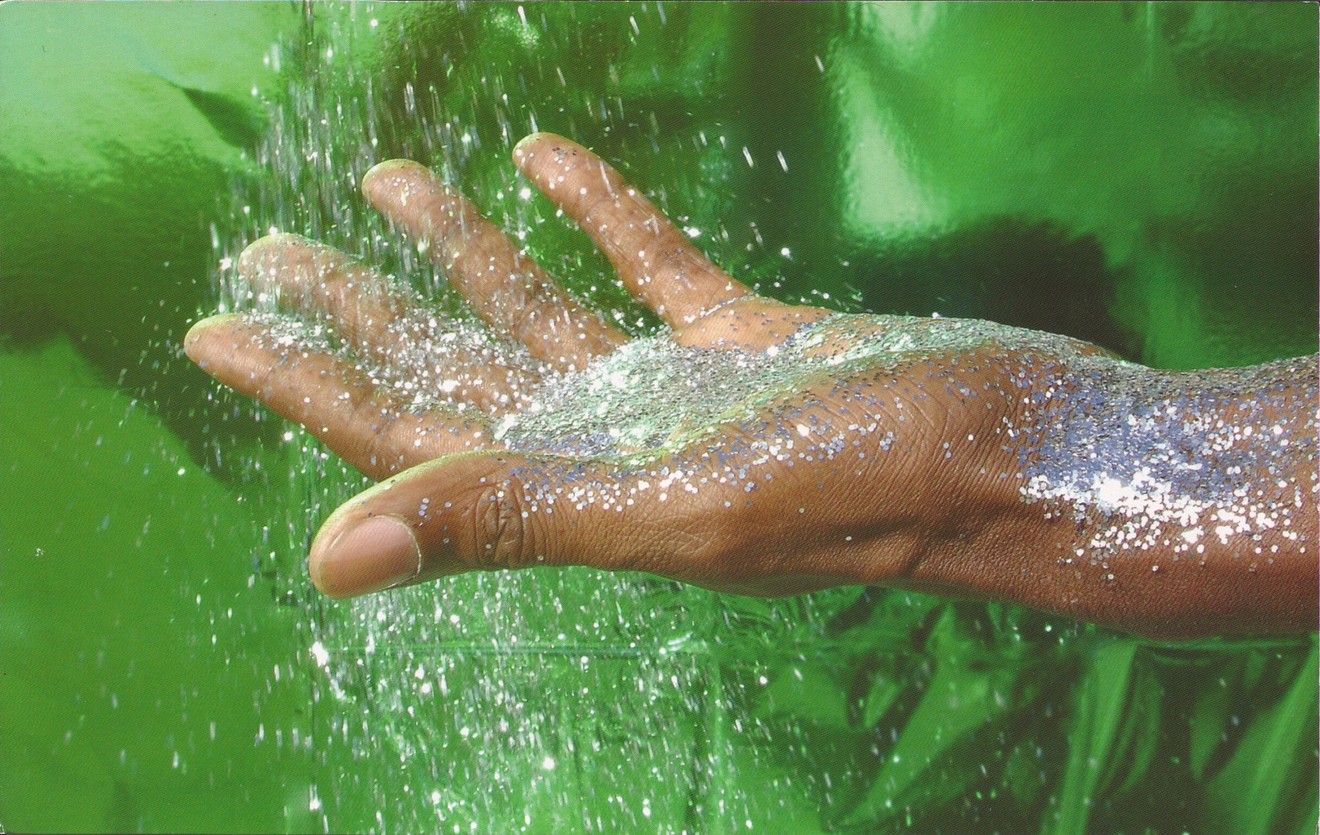Tra Publishing Locust Book Video from Ilona Creative Studio on Vimeo.
Miami’s art scene wouldn’t be the same without Locust Projects, one of the city’s most prominent arts organizations and its longest-running alternative nonprofit art space. Celebrating its 20th anniversary, Locust Projects is releasing a book, fittingly titled The Twentieth Anniversary Retrospective, that documents the many thought-provoking, intense, and zany projects the organization has hosted.“Locust Projects has always been wonderful at giving opportunities locally and internationally to artists… Having an alternative art space in Miami has meant a lot to a lot of artists. Locust is by artists, for artists, and about artists,” says Dennis Scholl, the founding chair of Locust Projects.
In an interview with New Times, Scholl and his wife Debra Scholl, the current chair, looked back at Locust Projects' most memorable exhibitions of the two decades.
"Nathan Carter: Delta Echo Triple One Upper." November 15 - December 22, 2003. People often compare the workings of the human brain to that of an electrical circuit. Nathan Carter’s Delta Echo Triple One Upper visualizes mind and machine as both parallel and intersecting. In this installation, Carter constructed a series of large-scale, site-specific wall relief sculptures that resemble organic and electronic elements, like insects, maps, circuit boards, and landscape models.
"Kori Newkirk: Bixel." December 3, 2005 - January 4, 2006. Glitter, grass, and gold were on Kori Newkirk’s palette in 2005 when he created his first-ever video installation for Locust Projects. Titled Bixel, the film is inspired by science fiction and biographical episodes. In the nonlinear video, Newkirk explores a verdant landscape wearing gold spandex, discovers a nest of silver spheres, and oozes silver glitter from his mouth and hands.
“Locust has two threads of artists,” says Dennis Scholl. “They have the young emerging artist who hasn’t necessarily shown in an institutional setting and
"Clifton Childree: Dream Cum True." September 13 - October 25, 2008. Step right up to Dream Cum True, an installation that Debra Scholl describes as “a carnival-like exhibition.” In Clifton Childree’s 2008 work, visitors walked through the manufactured ruins of an abandoned, adult-themed amusement park. The installation gave viewers the haunting effect of an empty fun park where the staff has gone but the attractions whisper through the night.
"Leyden Rodriguez-Casanova: An Uneven Floor." January 16 - February 20, 2010. There’s something so comfortable about a lush, pink carpet. But in An Uneven Floor, Leyden Rodriguez-Casanova subverted the expectation of familiar domesticity by steeply elevating part of the Locust Projects gallery floor, rendering it precarious and peaked. Debra Scholl names the installation as one of her favorites.

"Liam Gillick: La aparente union del cielo y la tierra (The apparent junction of earth and sky)."
Photo courtesy Locust Projects
"Ruben Ochoa: Cores and Cutouts." November 12, 2011 - January 28, 2012. Miami is known for its luxurious architecture, but in the site-specific installation Core and Cutouts, marking Ruben Ochoa’s first solo exhibition in the Magic City, he exposes another side of
"Theaster Gates: Soul Manufacturing Corporation." November 10 - December 21, 2012. Dennis Scholl calls Theaster Gates’ performance and installation Soul Manufacturing Corporation “my personal favorite.” In this multidisciplinary installation that ran for a little over a month in 2012, Gates set up a small utopia where skilled makers worked, producing bricks and other objects out of clay, while a yoga instructor, DJ, or a reader came to introduce balance to the environment. Scholl was so intrigued with Gates’ project that he produced a short film about it, titled Theaster Gates: Soul Manufacturing Corporation, which was nominated for an Emmy.
"Daniel Arsham: Welcome to the Future." November 15, 2014 - January 20, 2015. “We spent two months preventing people from falling in,” laughs Dennis Scholl as he describes Daniel Arsham’s project Welcome to the Future. In the installation, the artist dug a large trench in the gallery floor and filled it with a panoply of media devices including Blackberries, boomboxes, SLR cameras, game controllers, film projectors, and VHS tapes. Arsham then covered the materials with crystal and volcanic ash, colliding the obsolescence of the 20th-century devices with references to the preservation of Pompeii after the eruption of Mount Vesuvius.
"Martha Friedman: Pore." November 07, 2015 - January 09, 2016. In the 2015 installation and performance titled Pore, Friedman poured approximately 1,000 pounds of rubber onto the Locust Projects floor in order to make several large, vibrantly hued sheets. After they were suspended, a costume was attached to each sheet, referencing one of the four bodily
“One of my favorites was when Martha Friedman created these rubber objects that had costumes attached. A dancer came in and wore each of them and performed," says Debra Scholl. “It was an incredible event.”

"Antonia Wright: Under the water was sand, then rocks, miles of rocks, then fire."
Ginger Photography
Locust Projects: The Twentieth Anniversary Retrospective is available for preorder at trapublishing.com.




















